In this blog, we’re exploring three favorites: rum, vodka, and whiskey. These drinks aren’t just popular choices at bars and parties; they each have a special story. Rum brings the sunshine and sweetness of the Caribbean. Vodka, clear and smooth, comes from the fields of Russia and Poland. And whiskey? It’s like a journey through the rich traditions of Scotland, Ireland, and America. Today, these spirits are more than just drinks. They’re a way for people to show their creativity, especially in making new and exciting cocktails. So, let’s dive in and discover what makes rum, vodka, and whiskey so unique and loved by people all around the world.
Section 1 What is Rum?
1.1 Origins and Production
Rum’s story begins in the lush, tropical sugarcane fields of the Caribbean, a region historically pivotal to its production. The process of making rum is both an art and a science. It starts with sugarcane, a tall grass that’s full of sweet juice. Once harvested, the sugarcane is processed to extract molasses, a thick, sweet byproduct. In some cases, the fresh sugarcane juice is used directly. This molasses or juice is then fermented, where yeast transforms the sugars into alcohol.
The next crucial step is distillation. Rum is distilled using either pot stills, which are traditional and yield a fuller-flavored rum, or column stills, which produce a lighter rum. This distillation process concentrates the alcohol and flavors, setting the stage for the next transformative phase: aging.
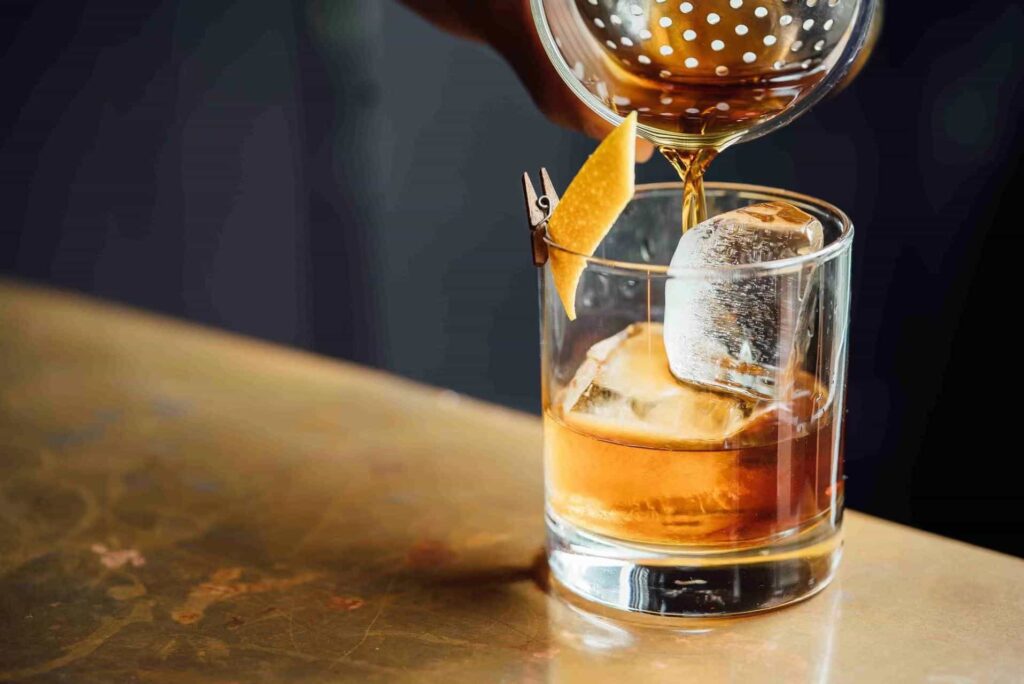
Aging is where rum gains its complexity. Stored in barrels, often ones previously used for bourbon or sherry, rum slowly interacts with the wood. This interaction imparts rich flavors and colors to the rum. The climate plays a significant role here – the tropical heat of the Caribbean accelerates aging, intensifying the flavors.
1.2 Characteristics
Rum is celebrated for its sweet and rich flavor profile. The most predominant flavors include caramel and molasses, a direct nod to its sugarcane roots. But that’s not all – rum is also famous for its versatility in flavors. Depending on the production method and region, some rums exhibit notes of tropical fruits, vanilla, or even a smoky quality.
The color of rum is an indicator of its character and age. It ranges from clear, which is usually light and smooth, to dark, which is richer and more intense. The color is influenced by the aging process and any additional ingredients added post-distillation, like caramel for color adjustment.
Rum’s versatility makes it a favorite in the world of cocktails. Light rums are perfect for mixed drinks like Mojitos and Daiquiris, where their subtle flavors complement the mixers. Darker rums are often enjoyed in deeper, more flavorful concoctions like Pina Coladas or simply sipped neat, allowing the complex flavors to shine through.
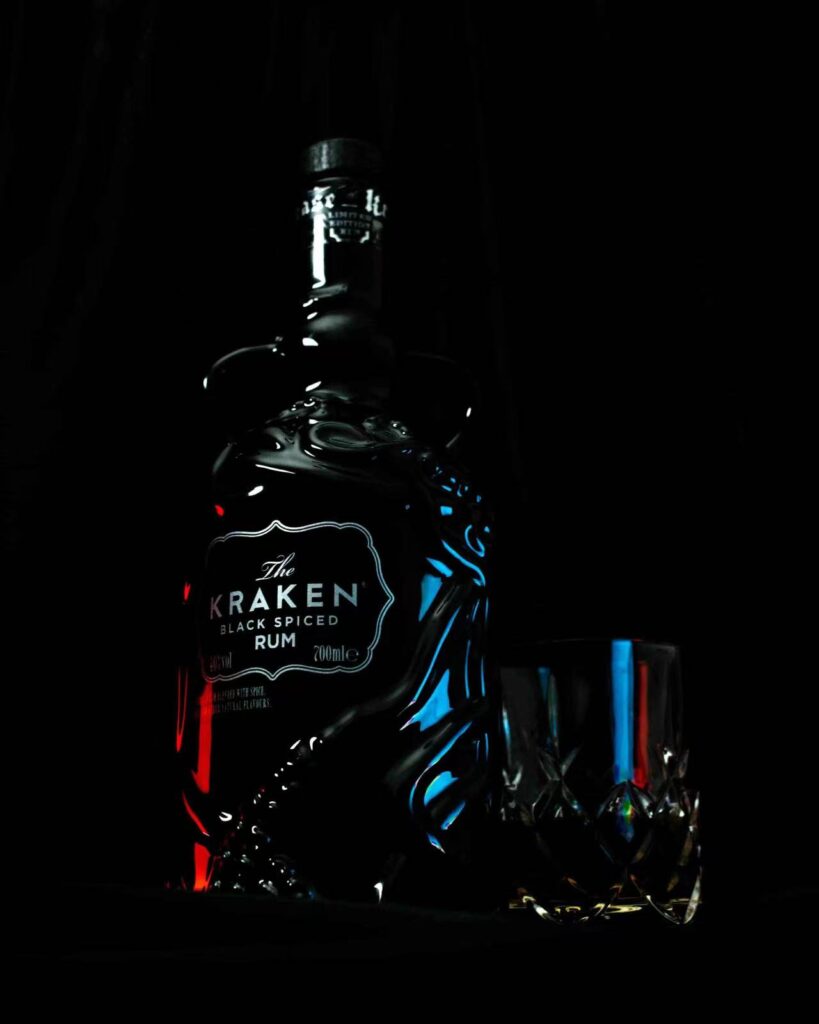
Section 2 What is Vodka?
2.1 Origins and Production
Vodka, a spirit synonymous with purity and simplicity, has its historical roots deeply embedded in the cultures of Russia and Poland. Its name, derived from the Slavic word for water, reflects its essential, unadorned character.
The traditional base for vodka is grain – wheat and rye being the most popular. However, it’s not limited to grains alone; potatoes, and sometimes even fruits or sugar beets, are also used. The choice of base ingredient plays a subtle role in the final flavor profile of the vodka.
The process begins with fermentation, where sugars in the base ingredient are converted into alcohol by the action of yeast. This produces a low-alcohol-content liquid, which is then ready for distillation. Distillation is where vodka truly begins to take shape. Employing either pot stills for small-batch artisanal varieties or column stills for a more refined product, this process purifies the liquid, increasing its alcohol content.
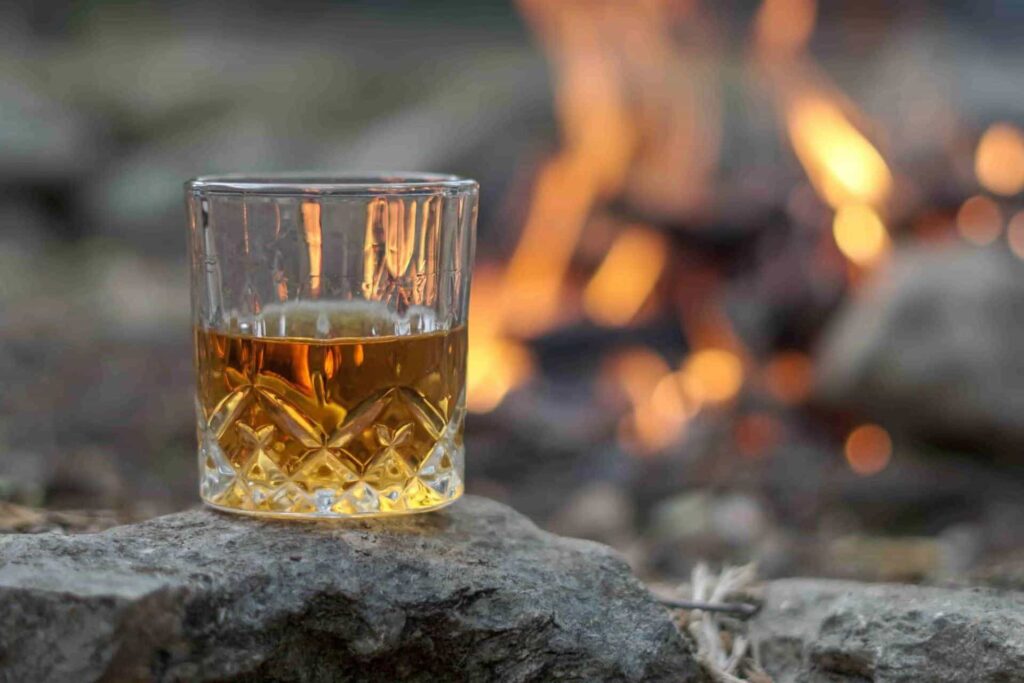
But what really sets vodka apart is its filtration process. Often filtered through charcoal or other materials, this step is crucial in removing impurities and ensuring vodka’s renowned clarity and purity. This pursuit of purity is not just about flavor – it’s also a nod to vodka’s traditional role in Eastern European culture as a clean, straightforward spirit.
2.2 Characteristics
The hallmark of vodka is its smooth, clean taste, often described as neutral or flavorless. This neutrality is why vodka is so versatile and popular in mixed drinks. It doesn’t overpower other ingredients, making it an ideal base for a wide range of cocktails. From the sharp tang of a Bloody Mary to the refreshing zest of a Moscow Mule, vodka complements rather than competes with the flavors of the mixers.
Vodka’s appearance is almost invariably clear, resembling water in its purity. This clarity is a testament to the meticulous distillation and filtration process it undergoes. It’s a spirit that prides itself not on complexity or boldness, but on its subtlety and versatility.
For packaging, vodka bottles often reflect their minimalist nature, with sleek, clean designs that communicate the spirit’s purity and modernity. This simplicity in design appeals to a broad range of consumers and allows for creative branding and presentation.
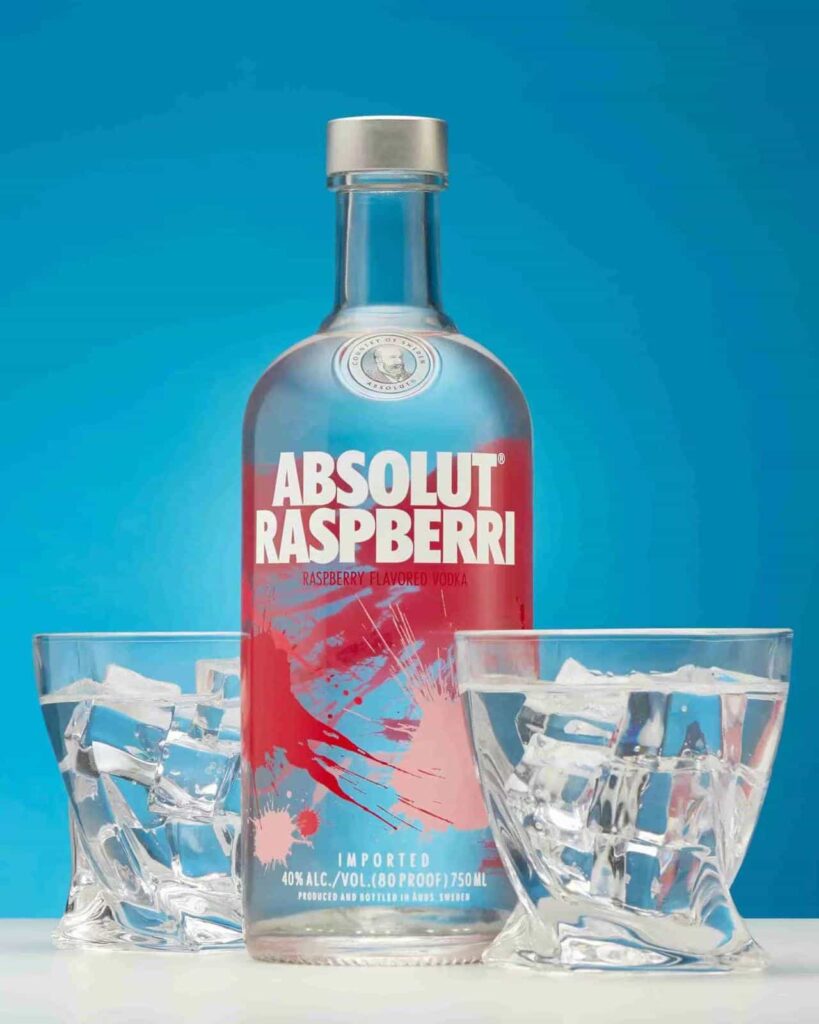
Section 3 What is Whiskey?
3.1 Origins and Production
Whiskey, a spirit with a global footprint and a rich tapestry of regional styles, has its most notable traditions rooted in Scotland, Ireland, and the United States. Each of these regions contributes uniquely to whiskey’s diverse character.
The process of making whiskey begins with the creation of a grain mash. This mash can be made from a variety of grains, each imparting its flavor profile to the final product. Corn is often used in American bourbon, barley in Scotch whisky, and a mix of grains in Irish whiskey. The grains are milled, mixed with water, and then fermented, allowing yeast to turn the sugars into alcohol.
Distillation is the next critical step. Using pot stills or column stills, the alcohol is concentrated and separated from the mash. This distilled spirit, known as “new make,” is clear and lacks the depth and complexity associated with matured whiskey.
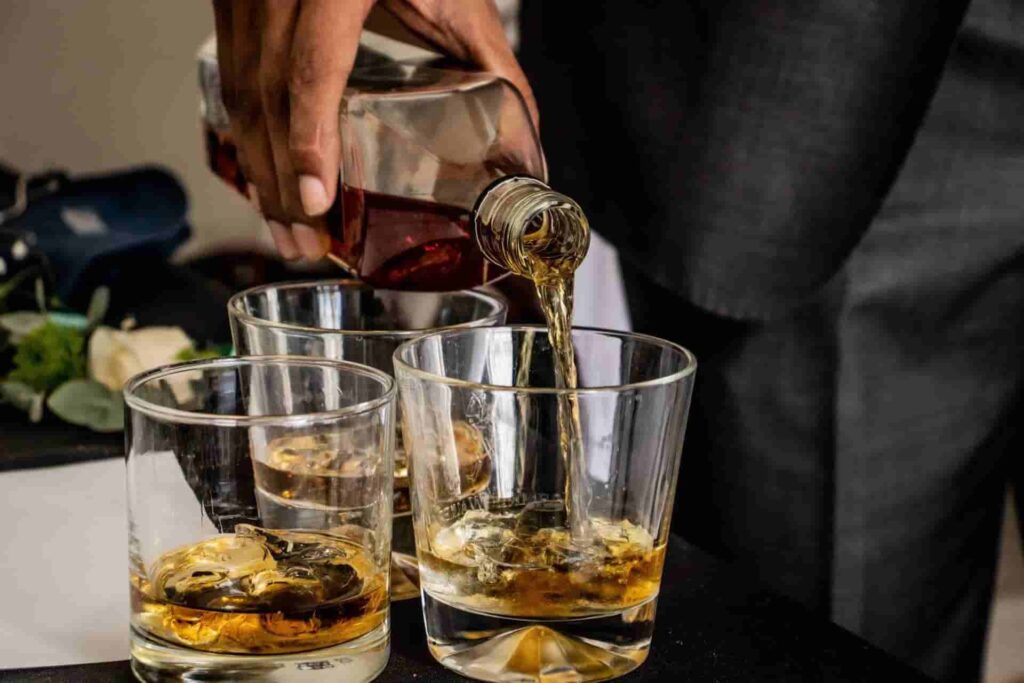
Aging is where whiskey acquires its personality. The spirit is stored in wooden barrels, typically oak, where it transforms. The interaction between the wood and the spirit over time adds depth, flavor, and the characteristic amber color. The length of aging, type of wood, and the environment of the storage area (climate, humidity) all influence the final flavor. For instance, the cooler climate of Scotland results in a slower aging process compared to the warmer American South.
3.2 Characteristics
The world of whiskey is incredibly diverse. Each type of whiskey offers a unique flavor profile:
○ Scotch Whisky: Known for its earthy, smoky flavors, especially in varieties like Islay, which are famous for their strong peat presence.
○ Irish Whiskey: Typically smoother and lighter than Scotch, often with hints of fruit and a slightly sweet finish.
○ American Bourbon: Characterized by its sweetness with notes of vanilla, oak, and caramel, resulting from the corn base and new charred oak barrels used in its production.
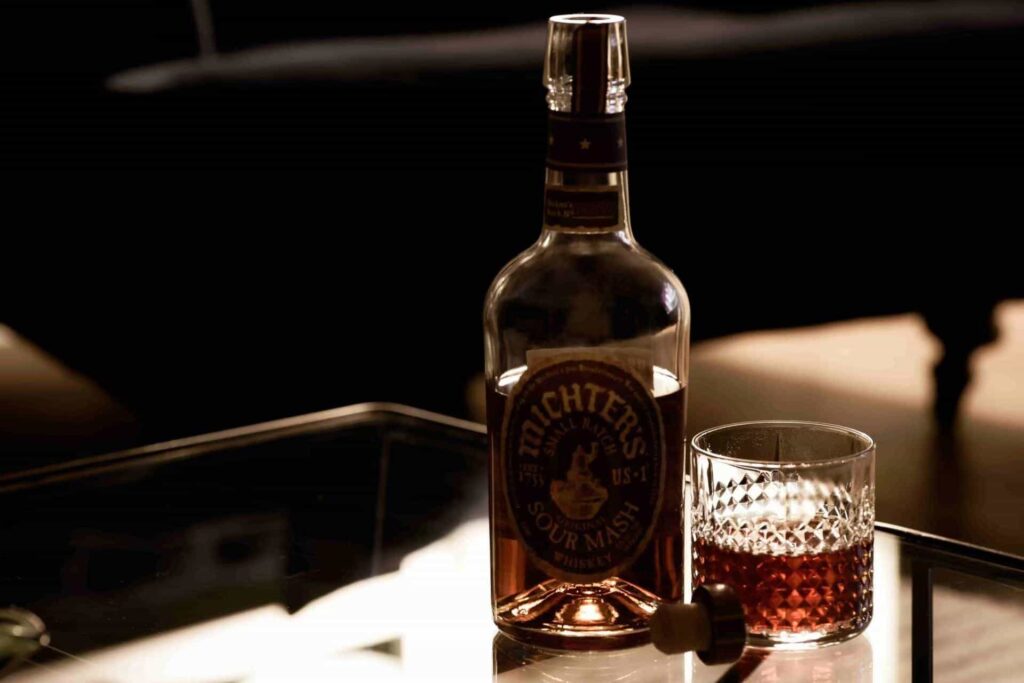
The way whiskey is enjoyed can also vary widely. Some prefer it neat, allowing the pure flavors to be savored. Others enjoy it on the rocks, where the slight dilution opens up different flavor notes. And then there are classic whiskey cocktails like the Whiskey Sour or the Old Fashioned, where whiskey’s complexity is balanced with sweetness and acidity.
In packaging, whiskey bottles often convey tradition and craftsmanship. From elegant and understated to bold and rustic, the bottles reflect the heritage and style of the whiskey within.
Section 4 Comparing Rum, Vodka, and Whiskey
4.1 Flavor Profiles
○ Rum: Known for its sweet and rich flavor, rum often has notes of caramel, molasses, and, depending on the variety, hints of tropical fruits or spices. This complexity makes rum a versatile choice for various cocktails and sipping experiences.
○ Vodka: Celebrated for its neutrality and smoothness, vodka is almost like a blank canvas, capable of pairing well with a wide range of mixers. Its subtle character doesn’t overpower other flavors, making it ideal for creative cocktail crafting.
○ Whiskey: With a palette that ranges from smooth and mellow to rich and peaty, whiskey is perhaps the most diverse of the three. Its flavors can include notes of vanilla, oak, smoke, fruits, and spices, varying greatly between different types like Scotch, Bourbon, and Irish whiskey.
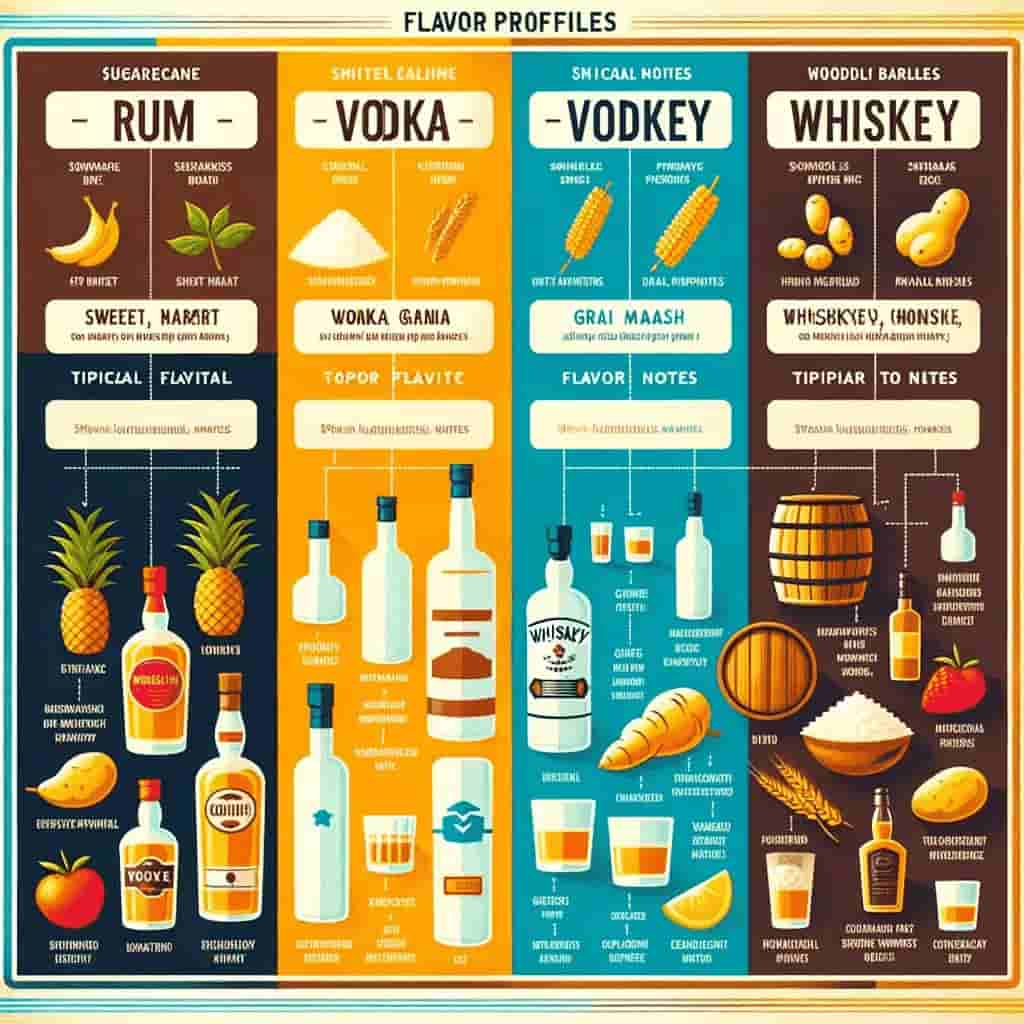
4.2 Ideal Packaging Solutions
The alcohol bottles of glass packaging for these spirits play a crucial role in their appeal and branding.
○ Rum Bottles: The design of rum bottles often reflects its tropical origins, sometimes featuring vibrant colors and exotic shapes. They might also display elements that hint at the spirit’s Caribbean heritage, like palm trees or nautical themes, aligning with the lively and adventurous spirit of rum.
○ Vodka Bottles: Vodka packaging tends to lean towards sleek, modern, and sometimes minimalist designs. Clear glass is often used to mirror the spirit’s clarity and purity, and the bottle shapes are usually straightforward yet elegant, emphasizing vodka’s modern and versatile character.
○ Whiskey Bottles: Whiskey bottles commonly convey a sense of tradition and craftsmanship. They might be robust and heavy, suggesting the rich history and complexity of the spirit within. The use of embossed details, classic typography, and labels that speak of heritage are common. This style of packaging resonates with whiskey’s image as a spirit with depth and history.

The choice of bottle, label design, and overall packaging aesthetic are crucial for brand identity in the highly competitive spirits market. They not only preserve the product but also tell a story, attract the consumer, and communicate the quality and character of the spirit inside.
Smilebottles’ Custom Glass Spirit Bottles
At Smilebottles, we specialize in creating custom spirit bottles that are as unique as the beverages they hold. Our expertise lies in crafting bottles that not only preserve and protect the contents but also elevate the brand’s identity. We understand that a bottle is more than just a container. It’s a statement of quality and style. That’s why our design team works closely with clients to bring their vision to life, whether it’s a sleek, modern design for a premium vodka, a robust and traditional whiskey bottle, or a vibrant and exotic container for rum. Using the latest in glass manufacturing technology and a keen eye for detail, we ensure each bottle reflects the spirit’s character and appeals directly to the target market. From initial concept to final product, Smilebottles is dedicated to delivering packaging solutions that stand out on the shelf and resonate with consumers worldwide.










